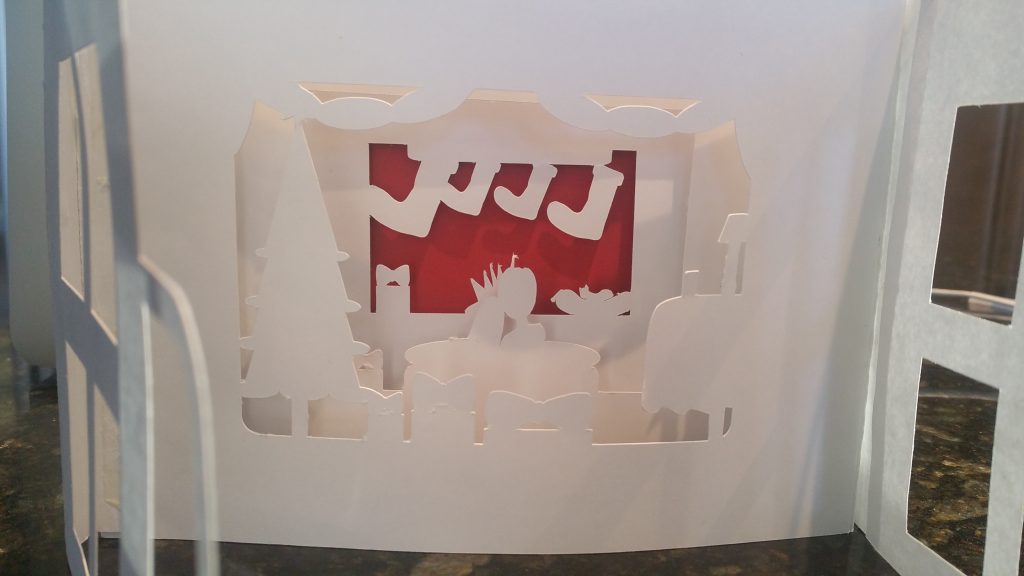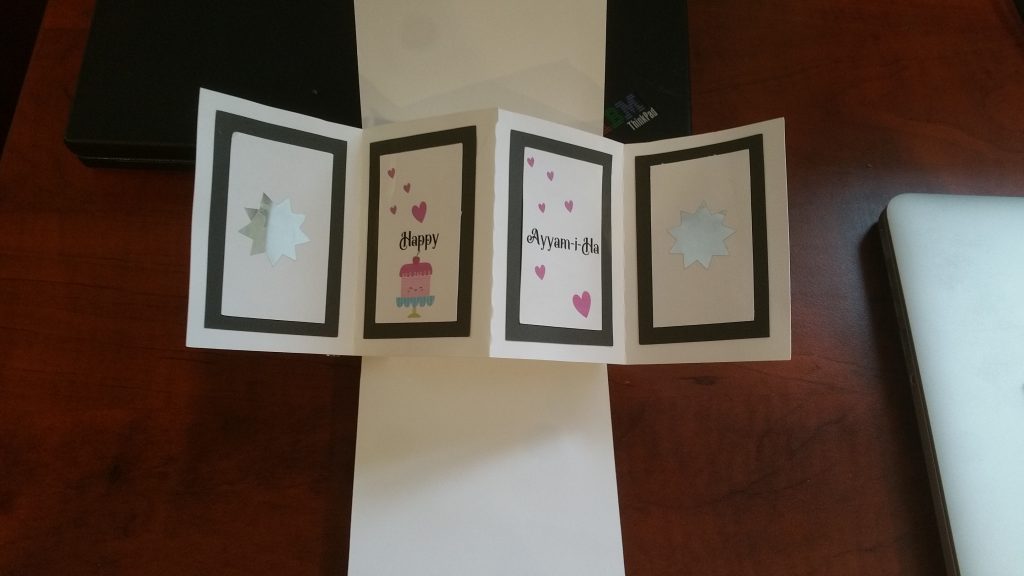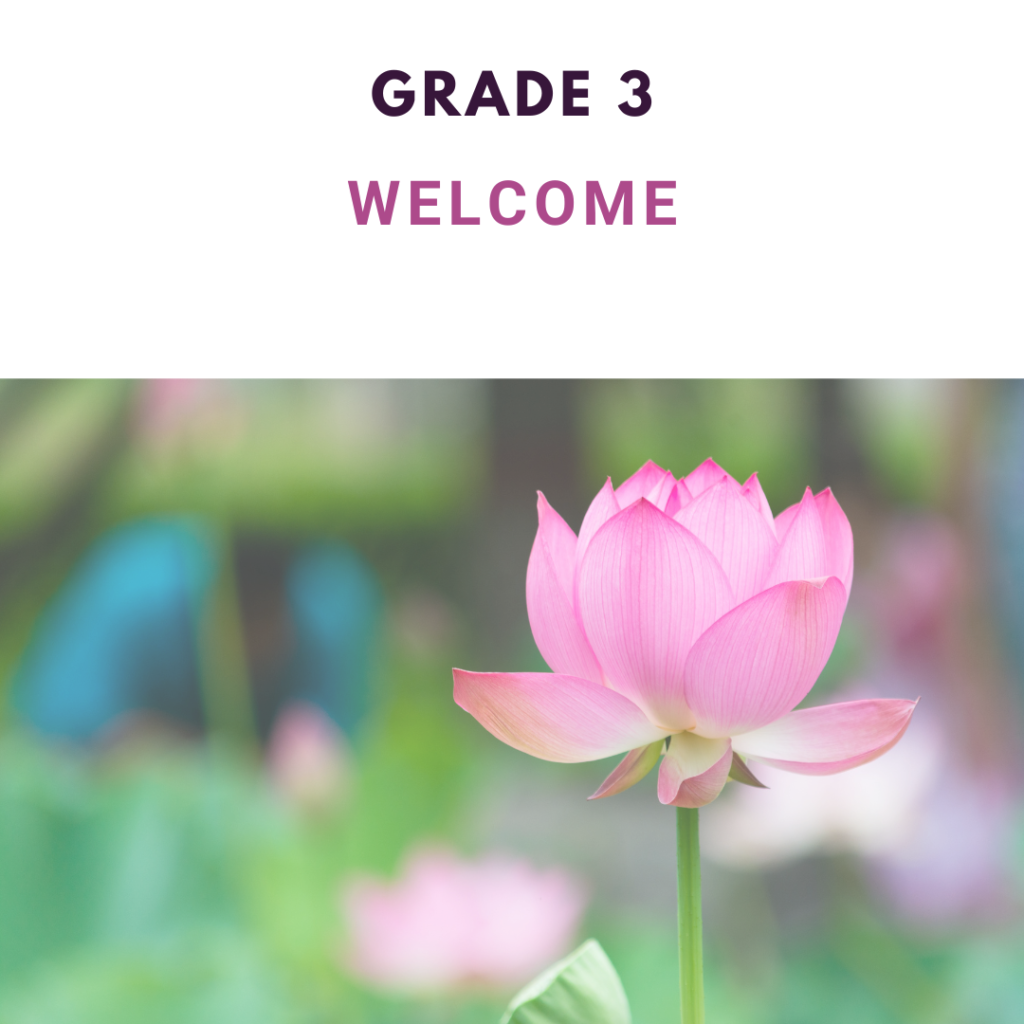
MOSES AND THE LAWS OF GOD
In this lesson, we will learn about another manifestation of God: – Moses
The purpose of today’s lesson is for the children to understand that the Manifestations of God are Divine Educators, that Each brings a set of laws and ordinances suited to the capacity of the age in which He appears, and that these laws enable human beings to develop their spiritual powers and create a more just and beautiful world. The children will learn specifically about the life of Moses, Who, as explained by Abdu’l-Baha, established laws, and ordinances that “gave life to the people of Israel, and let them to the highest possible degree of civilization at that period.” The following ideas may assist you in speaking to the children on this important subject.
The Manifestations of God are Divine Educators. In order to advance from age to age, humanity needs a Divine Teacher at every stage, One who can help us to understand how God wants it to organize its affairs and develop its capacity. In this way, all the wonderful qualities and attributes with which He has endowed humanity can shine forth. Every Manifestation brings a set of laws and ordinances that is suitable to the capacity of the people among whom He appears, perfectly geared for that age. His laws and ordinances tell them how God wants them to live, in order to advance in knowledge and understanding and draw closer to humanity’s glorious destiny. Without the laws and teachings of God’s Manifestations, true progress would not be achieved. Think of a field or an orchard. If left wild, without care, no fruitful trees would grow on it. But when its plants are tended and trained, it becomes a beautiful garden; the thorns and thistles give way to delicious fruit and fragrant flowers. In the same way, by following the laws and ordinances of the Manifestation of God for today, we are able to develop our capacity more fully and, as a people, attain great heights of accomplishment.
Moses was a Manifestation of God Who appeared after Abraham when His people were ready to receive a NEW set of laws and ordinances that would enable them to reach a new level of progress. The laws and ordinances of God brought by Moses educated His people, trained and disciplined them, freeing them from the darkness of ignorance and leading them into the light of knowledge and true understanding.
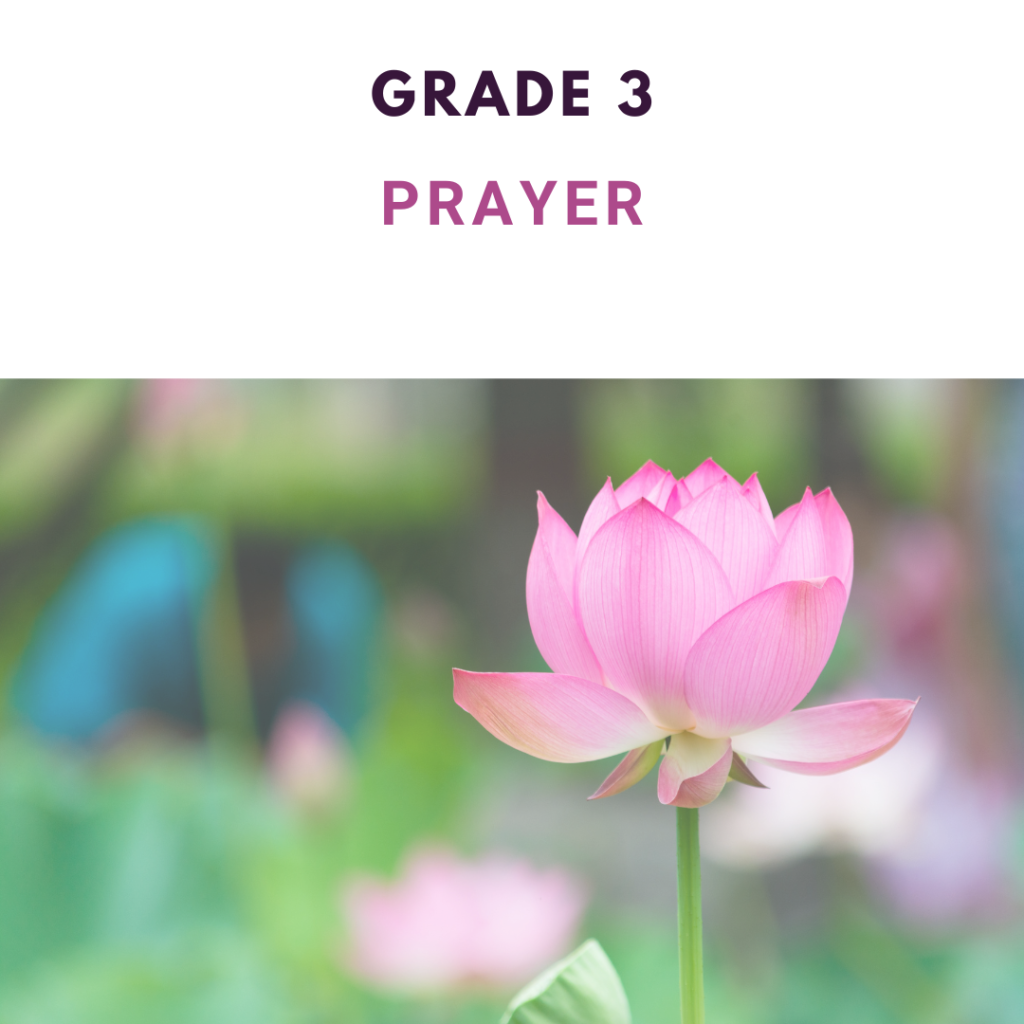
REMEMBER, DOWNLOAD THE PDF TO HELP MEMORIZE THE PRAYERS. IF YOU HAVE NOT ALREADY DONE SO, use the Google Drive download LINK
SET 1
Glory be to Thee, O my God! Make manifest the rivers of Thy sovereign might, that the waters of Thy Unity may flow through the inmost realities of all things, in such wise that the banner of Thine unfailing guidance may be raised aloft in the kingdom of thy command and the stars of Thy divine splendour may shine brightly in the heaven of thy majesty. Potent art Thou to do what pleaseth Thee. Thou, verily, art the Help in Peril, the Self-Subsisting.
SET 2
I beseech Thee, O my God, by all the transcendent glory of Thy Name, to clothe Thy loved ones in the robe of justice and to illumine their beings with the light of trustworthiness. Thou art the One that hath power to do as He pleaseth and Who holdeth within His grasp the reins of all things, visible and invisible.
SET 3
I have wakened in Thy shelter, O my God, and it becometh him that seeketh that shelter to abide within the Sanctuary of Thy protection and the Stronghold of Thy defence. Illumine my inner being, O my Lord, with the splendours of the Dayspring of Thy Revelation, even as Thou didst illumine my outer being with the morning light of Thy favour.
SET 4
O my God, my Master, the Goal of my desire! This, Thy servant, seeketh to sleep in the shelter of Thy mercy, and to repose beneath the canopy of Thy grace, imploring Thy care and Thy protection. I beg of Thee, O my Lord, by Thine eye that sleepeth not, to guard mine eyes from beholding aught beside Thee. Strengthen, then, their vision that they may discern Thy signs, and behold the Horizon of Thy Revelation. Thou art He before the revelations of Whose omnipotence the quintessence of power hath trembled. No God is there but thee, the Almighty, the All-Subduing, The Unconditioned.
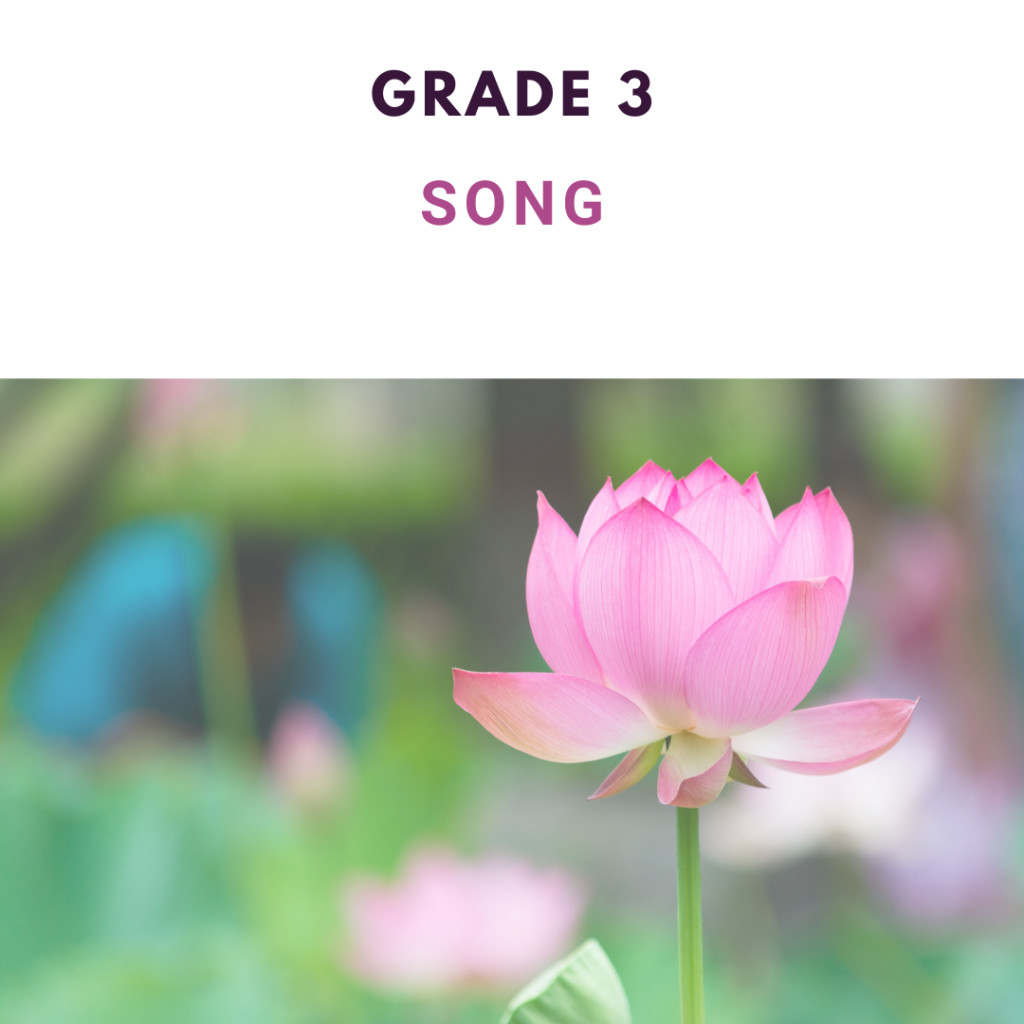
THE PURPOSE: RUSS SALTON
MAKE FIRM OUR STEPS: JOE CRONE
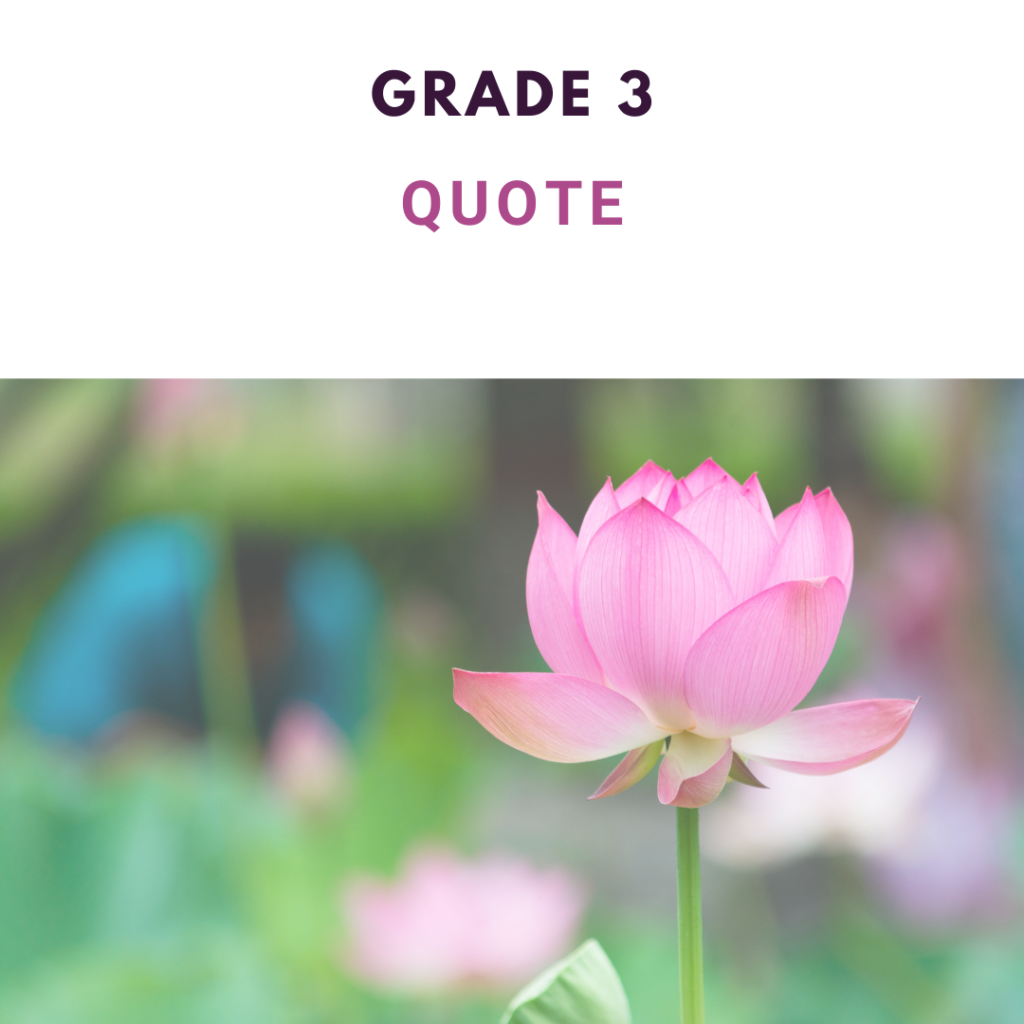
The quotation below from the Writings of Bahá’u’lláh reminds us that true progress depends on following the laws brought to us by God’s Manifestations.
Be not forgetful of the law of God in whatever thou desirest to achieve, now or in the days to come. Say: Praise be to God, the Lord of all worlds!
Proclamation of Bahá’u’lláh/Sultán Abdu’l-‘Aziz
SEND THE QUOTE TO SOMEONE YOU KNOW: SEND BY MAIL OR EMAIL TO THEM
Memorization Aid: SCRAMBLED QUOTE DOWNLOAD
USE THIS WORKSHEET FOR ANY WORDS YOU ARE NOT SURE OF Download it here

NOTE TO TEACHER
While it will be important for the children to follow the events in the stories well, you will want to make sure that they grasp their spiritual significance. That Moses carried with Him a staff through which He was able to achieve great things should be seen, for example, as the divine knowledge that He, like other Manifestations, possessed. The children should recognize, further, that the account of the liberation of the Hebrew people from Egypt and their long journey back to the Promised Land also speaks to us of their spiritual transformation: that they had grown far from God and that through the teachings and laws brought by Moses, they were able to draw close to Him once again and live in accordance with His commands.
THINK ABOUT: How will you ensure that these and other spiritual insights offered by the stories are brought to the attention of your students?
Story 1
Moses was born into a Hebrew family in the land of Egypt a few thousand years ago. You remember from the last lesson that Abraham and His family had settled in Canaan and that the Hebrew people were His descendants through one of His sons, Isaac. Now Isaac had a son named Jacob, who had many sons of his own. During the time of Jacob, severe drought came to the region. With no water, food became scarce and there were seven years of famine. So, the Hebrew people left for Egypt where water and food were plentiful. There they were welcomed and lived happily for many generations.
In those days, the ruler of the land of Egypt was known as the Pharaoh. Eventually one of the Pharaohs became fearful of the Hebrew people, believing they might try to overtake his land, and so he enslaved them. They were forced to work in the fields and build new structures. As slaves in Egypt, the Hebrew people suffered greatly. But then something even worse happened. An order was given that all their newborn male children should be killed to prevent them from growing into soldiers who could rise up against the Pharaoh. It was around this time that Moses was born.
Moses’ parents were among the enslaved, and they already had a daughter named Miriam and a young son named Aaron. Can you imagine the fear that must have filled the heart of Moses’ mother when she gave birth to a new little boy? For three months, she was able to keep Him in hiding. But eventually, she could conceal Him no longer, and so she put Him in a small basket and sent it floating down the River Nile, praying that He would be found and saved. Meanwhile, His sister, Miriam, hid in the bushes to see what would become of her little Brother. Just then the daughter of the Pharaoh came down to the river with her maids to bathe. Noticing the basket, she asked one of her maids to bring it to her. She wept with compassion at finding the baby inside and decided to raise Him as her own son, naming Him Moses. And so it was that the life of Moses was spared, and He came to be raised in the palace of the Pharaoh. He was a prince.
STORY 2
At times the young Moses, as a member of the royal household, would inspect the work of the Hebrew slaves, who were laboring under harsh conditions to build structures and great stone pyramids at the Pharaoh’s command. He saw the cruelty with which they were treated, and He grew troubled by their suffering. Moses, of course, came to know that He, too, was of the Hebrew people, which, unlike the Egyptians who worshipped idols, believed in one God, as taught by Abraham. Eventually, Moses met His sister, Miriam, and His older brother, Aaron. Still, He was separate from His people, a member of the Pharaoh’s household.
One day, however, while carrying out an inspection of some construction work, Moses saw an Egyptian supervisor striking a slave, who was struggling to defend himself. The man cried out for assistance, and Moses swung out His arm to help him. The supervisor fell to the ground, killed by the powerful blow.
News of the incident quickly spread throughout the city, and Moses fled from Egypt to escape the Pharaoh’s men, who sought to put Him to death. Moses begged God for forgiveness, as His intention had been but to help the beleaguered Hebrew slave, and He asked God to show Him the way forward. He was led to the land of Midian, where He was taken in by the family of a prosperous shepherd. He eventually married one of the shepherd’s daughters and was given responsibility for several flocks of sheep, spending long hours alone in the open countryside tending to the animals. The suffering of the enslaved Hebrew people in Egypt was never, however, far from His thoughts, and especially during times of solitude, He would pray and meditate, asking God for guidance.
It was while tending sheep, alone, that Moses became aware of the station to which God had called Him. He saw a bush burning in the desert that was not consumed by the flames. As He approached the bush the Voice of God could be heard, bidding Him to make His way back to Egypt and, with His brother Aaron by His side, call on the Pharaoh to free the Hebrew people. Moses was assured that He would be given the strength to accomplish so great a task, liberating the Hebrews from the yoke of oppression and guiding them to the land of their forefather, Abraham.
STORY 3
(This story is also an activity in GAME / NARRATIVE section)
In accordance with God’s command, Moses returned to Egypt and went with Aaron to see the Pharaoh. Though He had spent so many years as a simple shepherd, majesty and grandeur had become manifest in Him. Moses asked that the Hebrew people be allowed to return to their homeland, to worship and serve God. He proclaimed the Message of the oneness of God, Creator of all things, but the Pharaoh refused to listen and demanded proof of the greatness of God. At this, Moses cast down his staff, and as it fell to the ground, it turned into a serpent before the eyes of all in the Pharaoh’s court. But the Pharaoh was not convinced. He believed that his own priests and sorcerers could perform acts as great as Moses’, so he called them to the palace to demonstrate their skill. Once they had gathered, all of the Pharaoh’s sorcerers cast their staffs to the ground where they, too, turned into serpents. But when these serpents encountered the one that Moses had cast, it swallowed each of them up in turn. This story of Moses’ encounter with the priests tells us that, no matter how much power they have or how much knowledge they possess, those who oppose God’s Manifestation can never disprove His claims, and the proofs that Moses put forth, like the serpent, overpowered the arguments made by the priests. Yet still, the Pharaoh would not accept Moses’ Message of one God. His heart was hardened, and he would not let the Hebrew people go.
Not long after, Moses returned to the Pharaoh and warned him that ten plagues would afflict the land of Egypt if he did not free the Hebrew people. But the Pharaoh was heedless to the warning, and one by one the plagues came. First, there was a heavy flood that filled the River Nile with red silt, overflowing the reservoirs and contaminating the water so there was little to drink. Next, great hailstones fell and destroyed the crops, creating a shortage of food. The hailstones were followed by swarms of locusts so thick that they blocked the sun. Then a scourge of frogs overran the city. Prior to the onset of each plague, Moses would foretell the event and would call on the Pharaoh to relinquish his grip on the Hebrew people, and each time the Pharaoh would refuse until he saw the consequences of the plague. He would then promise to let the people go. But each time he would break his promise and, in anger, increase the burden on the enslaved people. Egyptians and Hebrews alike blamed Moses for all the suffering in the land.
When the tenth plague came, the disease spread everywhere and took many lives. Even the Pharaoh’s eldest son became sick and died. The Hebrew households were, however, passed over by the plague. At last, after this tenth affliction, with his country and family devastated, the Pharaoh told Moses that He could take the people out of Egypt.
Moses led the Hebrew people through the desert. Day and night they traveled until they reached the shores of the Red Sea. The people were exhausted, hungry, and thirsty. They had barely stopped when they realized the Egyptian army was pursuing them. The Pharaoh had changed his mind once again and wanted to return the people into bondage. Now they were trapped. With the Egyptians behind them, they could not turn back; yet they could not move forward since there was no way to cross the sea. There seemed to be no escape, and they feared for their lives. They began to lose hope. But Moses reminded them that God would not abandon them and would always take care of them. Then, as the Egyptians drew nearer, God commanded Moses to raise His staff and stretch His hand out over the sea. As He did so, the water divided, leaving a path for the people to pass through. With another wave of His hand, the water flowed back again, washing away the Egyptian army and leaving the Hebrews safe on the other side of the Red Sea.
STORY 4
After their escape through the Red Sea, the Hebrew people were finally free from the Egyptians. But they still had a long way to travel through the hot, dry desert, if they were to reach the land of their forefather, Abraham. Conditions were harsh, and food and water were scarce. Discontent began to grow. Many complained and doubted Moses and the teachings of God. When they reached the foot of Mount Sinai, Moses left the people and climbed the mountain to commune with God. In His absence, the people turned back to the old ways. They melted their jewelry and created a golden idol, which they started to worship, forgetting the one true God. After forty days, Moses returned. He carried two stone tablets, upon which were inscribed God’s laws. Seeing that the people had returned to the worship of idols, Moses destroyed what they had made and begged God to show forgiveness to them.
In the confusion, however, the tablets Moses had brought were also destroyed, and so He returned to Mount Sinai and communed with God for another forty days. Once again, He came down from the mountain, His face radiant, carrying tablets engraved with Ten Commandments, laws by which the Hebrew people should live. They were commanded, for example, to recognize the one true God, to honor their fathers and mothers, and not to murder or steal or speak dishonestly. Moses told the people that if they obeyed these laws of God, they would become a holy nation. In response, the Hebrews, who came to be known as the Jewish people, promised to be obedient to God’s commandments. Later, the laws and teachings brought by Moses were recorded in a Holy Book called the Torah.
At last, after many long years in the desert, they neared Canaan, the Promised Land. Moses was then very old. From a mountain top, He could see the Promised Land and knew that the Hebrew people had reached their goal. His Mission was complete, and it was there, on the mountain top, that His earthly life came to an end. Moses had guided His people with wisdom and gave them God’s Ten Commandments to obey, and so they were raised out of slavery to a high state of civilization.
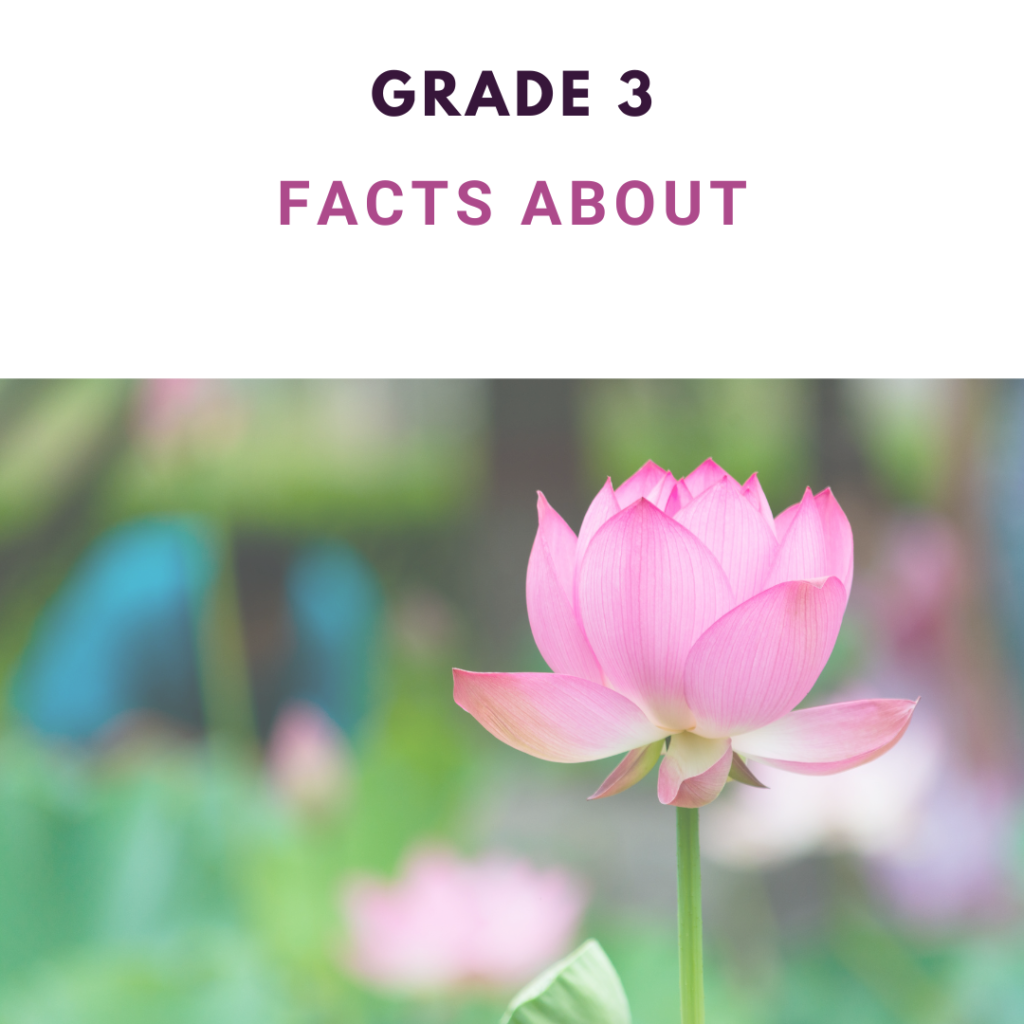
FACTS ABOUT MOSES
- Moses was born to a Hebrew family in Egypt… thousands of years ago.
- Moses was raised in…the Pharaoh’s palace as a prince.
- Ten plagues afflicted Egypt before…the Pharaoh agreed to free the Hebrew people.
- Moses led the Hebrew people…out of Egypt.
- The Ten Commandments are…God’s laws that Moses brought to humanity.
- Some of the Ten Commandments are…to honor one’s father and mother, not to steal, not to murder, and not to speak dishonestly.
- The laws and teachings brought by Moses are recorded in….a Holy Book called the Torah.
DOWNLOAD THE FACT CARDS HERE
OPTION 1, PLAIN
OPTION 2 PHOTO

Note that all the items below are found in the attached PDF. some can be presented as photos, some can be made ahead of time or substituted for your own prop.
Suggested Props:
- Handcuffs ( two strips of paper or foil looped together)
- small basket or picture of Moses basket, (there is one in the craft section)
- crown for a prince
- picture of great stone pyramids
- sheep
- staff,
- large snake
- small snakes
- red silt/sand
- hailstones (paper wadded up)
- locusts
- frogs
- toy medical kit (for disease), OR PHOTO IN PDF
- gold coins
- ten commandments were written out on paper in the shape of stone tablets
- the Torah
Today’s historical episode recounts the life of Moses. In relating this narrative to the children, whether in whole or in part, you should be sure to emphasize that Moses guided the Hebrew people out of slavery and educated them through the law of God, raising them to a higher level of civilization.
Moses was born in the land of Egypt thousands of years ago. His family was among the many descendants of the children of Abraham, the Hebrew people, who had settled and prospered long before in the Promised Land. Most people lived by farming and tending animals, and when the drought came to the Promised Land and water grew scarce, the Hebrew people made their way to Egypt, where they lived happily for a long time.
Eventually, the king of Egypt, known as the Pharaoh, became fearful of the Hebrew people, believing they might try to overtake his land, and so he made them slaves. Even worse, he ordered that all their newborn male children be killed to prevent them from growing into soldiers who could rise up against him. It was around this time that Moses was born.
Imagine the fear that filled the heart of Moses’s mother when she gave birth to her new little Son. For three months she was able to keep Him in hiding, but when she could conceal Him no longer, she put Him in a small basket and sent it floating down the Nile, praying that He would be found and saved. Later her daughter Miriam discovered that her tiny brother had been taken from the basket to the household of the Pharaoh who was persuaded to spare His life and had given the name Moses. So it was that Moses came to be raised in the Pharaoh’s palace and was treated as his very son. He was a prince.
At times, young Moses would inspect the work of the Hebrew slaves, who were laboring under harsh conditions to build structures and great stone pyramids at the Pharaoh’s command. He saw the cruelty with which they were treated, and He grew troubled by their suffering. Moses, of course, came to know that He, too, was of the Hebrew people, who, unlike the Egyptians who worshipped idols, believed in one God, as taught by Abraham. Eventually, Moses met His sister Miriam and His older brother Aaron, who had been born before the Pharaoh’s cruel order. Still, He was separate from His people, a member of the Pharaoh’s household.
One day, however, while carrying out an inspection of some construction work, Moses saw an Egyptian overseer striking a slave, who was struggling to defend himself. The man cried out for assistance, and Moses swung out His arm to help him. The overseer fell to the ground, killed by the powerful blow.
News of the incident quickly spread throughout the city, and Moses fled from Egypt to escape the Pharaoh’s men, who sought to put Him to death as punishment for killing one of the ruler’s overseers. Moses begged God for forgiveness, as His intentions had been but to help the beleaguered Hebrew slave, and He asked God to show Him the way forward. He was led to the land of Midian, where He was taken in by the family of a prosperous shepherd. He eventually married one of the shepherd’s daughters and was given responsibility for several flocks of sheep, spending long hours alone in the open countryside tending to the animals. The suffering of the enslaved Hebrew people in Egypt was never, however, far from His thoughts, and especially during times of solitude in the countryside, He would pray and meditate, asking God for guidance.
It was while tending sheep, alone, that Moses became aware of the Station to which God had called Him. He saw a bush burning in the countryside that was not consumed by the flames. As He approached the bush the Voice of God could be heard, bidding Him to make His way back to Egypt and with His brother Aaron by His side, call on the Pharaoh to free the Hebrew people. Moses was assured that He would be given the strength to accomplish so great a task, liberating the Hebrews from the yoke of oppression and guiding them to the land of their Forefather, Abraham.
In accordance with God’s command, Moses returned to Egypt and went with Aaron to see the Pharaoh. Though He had spent so many years as a simple shepherd, majesty and grandeur had become manifest in Him. Moses asked that the Hebrew people be allowed to return to their homeland to worship and serve God. He proclaimed the message of the oneness of God, Creator of all things, but the Pharaoh refused to listen and demanded proof of the greatness of God. At this, Moses cast down his staff, and as it fell to the ground, it turned into a serpent before the eyes of all in the Pharaoh’s court. But the Pharaoh was not convinced. He believed that his own priests and sorcerers could perform acts as great as Moses, so he called them to the palace to demonstrate their skill. Once they had gathered, all of Pharaoh’s sorcerers cast their staffs to the ground where they, too turned into serpents. But when these serpents encountered the one that Moses had cast it swallowed each of them up in turn. Of course, Bahaullah explained that the staff of Moses was in reality “the rod of celestial dominion”. He tells us that Moses possessed Divine knowledge and we know that through the Pharaoh’s priests tried to disprove His claims, the proofs that Moses put forth, like the serpent, overpowered the arguments they made. Yet still, the Pharaoh would not accept Moses’ Message of one God. His heart was hardened, and he would not let the Hebrew people go.
Not long after, Moses returned to the Pharaoh and warned him that ten plagues would afflict the land of Egypt if he did not free the Hebrew people. But the Pharaoh was heedless to the warning, and one by one the plagues came. First, there was a heavy flood that filled the River Nile with red silt, overflowing the reservoirs and contaminating the water so there was little to drink. Next, great hailstones fell and destroyed the crops, creating s shortage of food. The hailstones were followed by swarms of locusts so thick that they blocked the sun. Then a scourge of frogs overran the city. Prior to the onset of each plague, Moses would foretell the event and would call on Pharaoh to relinquish his grip on the Hebrew people, and each time the Pharaoh would refuse until he saw the consequences of the plague. He would then promise to let the people go. But each time he would break his promise and, in anger, increase the burden on the enslaved people. Egyptians and Hebrews alike blamed Moses for all the suffering in the land.
When the tenth plague came, the disease spread everywhere and took many lives. Even the Pharaoh’s eldest son became sick and died. The Hebrew households were, however, passed over by the plague. At last, after this tenth affliction, with his country and family devastated, the Pharaoh told Moses that He could take the people out of Egypt.
Moses led the Hebrew people through the desert. Day and night they traveled until they reached the shores of the Red Sea. The people were exhausted, hungry, and thirsty. They had barely stopped when they realized the Egyptian army was pursuing them. The Pharaoh had changed his mind once again and wanted to return the people to bondage. Now they were trapped. With the Egyptians behind them, they could not turn back; yet they could not move forward since there was no way across the sea. There seemed to be no escape, and they feared for their lives. They began to lose hope. But Moses reminded them that God would not abandon them and would always take care of them. Then as the Egyptians drew nearer, God commanded Moses to raise His staff and stretch His hand out over the sea. As he did so the water divided, leaving a path for the people to pass through. With another wave of His hand, the water flowed back again, washing away the Egyptian army and leaving the Hebrews safe on the other side of the Red Sea.
The sea was now behind them, but the people still had a long way to travel through the hot, dry desert. Conditions were harsh, and food and water were scarce. Discontent began to grow. Many complained and doubted Moses and the teachings of God. When they reached the foot of Mount Sinai, Moses left the people and climbed the mountain to commune with God. In His absence, the people turned back to the old ways. They melted their jewelry and created a golden idol, which they started to worship, forgetting the one true God. After forty days Moses returned. He carried two stone tablets upon which were inscribed God’s laws, the Ten Commandments, Seeing that the people had returned to the worship of idols, Moses destroyed what they had made and begged God to show forgiveness to them.
The tablets had also been destroyed in the confusion, so Moses returned to Mount Sinai and communicated with God for another forty days, at the end of which He came down from the mountain. His face was radiant, with a new set of tablets, again engraved with Ten Commandments, laws by which Hebrew people should live. For example, they were commanded to recognize the one true God, to honor their fathers and mothers, and not to murder steal, or speak dishonestly. Moses told people that if they obeyed these laws of God, they would become a holy nation. In response, the Hebrews who came to be known as the Jewish people promised to be obedient to God’s commandments. Later the laws and teachings brought by Moses were recorded in a Holy Book called the Torah.
At last, after many long years in the desert, they neared Canaan, the Promised Land Moses was then very old. From a mountaintop, He could see the Promised Land and knew that the Hebrew people had reached their goal. His mission was complete, and it was there, on the mountaintop, that His earthly life came to an end. Moses had guided His people with wisdom and gave them God’s Ten Commandments to obey, and so they were raised out of slavery to a high state of civilization.
DOWNLOAD THE PROP PDF HERE

BASED ON STORY ONE
This craft is based on story one. It is a craft with Moses in the basket. There are many crafts if you search “BIBLE STORY MOSES” I did not find one that did not have the picture of Moses so I made some myself.
Moses in the Basket: Pendulum Powered Card
This card is easy to make even if the instructions are a bit long. Download the template pieces. Note you can draw your own clouds, or grass or use the template. You can also draw the sky in and then color it. Card base is an 8.5″ x 6″ cardstock folded in half
Materials Needed
- Cardstock (white and light blue)
- Stiff clear plastic (Acetate) or heavy cardstock
- Glue
- Penny
Instructions
- Download the template pieces and print them on white cardstock.
- Cut a card 4.25″ x 5.5″ white
- Cut a card 4″ x 5.25″ light blue or white
- Cut out clouds, waves, and grass
- Cut pendulum from acetate or heavy card stock
- Glue or tape the penny to the round end of the pendulum
- Now position the pendulum onto the card that is 4″ x 5.25″ (light blue)
- Check to see that waves/grass covers the penny. Once the position is correct, secure with a brad (Split pin)
- Use foam tape on the back of the waves and grass pieces and position it on top of the pendulum
- Add the Moses basket to the top of the pendulum
- Finish the sky with clouds or draw in the sky of your choice.
- Attach to 4.25″ x 5.5″ card
- Attach the finished pendulum card to your notebook or to the card base (8.5″ x 6″ base) and use it as a greeting card
- Enjoy
FROM THE AUSTRALIAN PEACE PACK: MOSES BASKET
Use this template to cut out a simple basket, color it in, and decorate it.
Based on story 2: The Burning Bush
Use the template to print on cardstock and cut out. Assemble.
Story 3: The staff turns into a snake (our grade 3 in Burlington did this craft)
How To Make the Optical Illusion
Have you seen billboards where the image is different depending on which angle you are looking at it? Well, this craft is the paper version and it is quite cool. This type of optical illusion is called an anemograph. See more ideas here
Generic free templates here
First, download and print My Template. Download the instructions if needed. Colour the snake and the staff photos
Now cut the image apart, keep the number and letters with each piece
Fold the template like an accordion along the dashed lines. Note that there are numbers and letters. Glue the strips of the image you cut onto the correct space. There are 2 blank spaces not shown in this template. Do not stick anything there.
Cut off the extra numbers and letters once it is all glued on. Cut out the center of the frame template and glue the accordion with the picture to the frame. Note the updated template allows for the picture to have a blank space on either end. This will allow the pictures to be viewed without any overlap as seen in this one.
overlap is seen here on the left end….
Story 3 the Plague
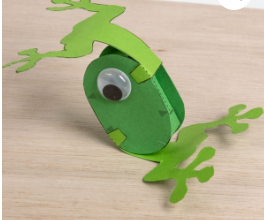
Rob Ives frog for the plague of frogs. This is based on a craft like the Mexican jumping bean. My blank template to use is HERE or you can purchase the one from Rob Ives.
You can also print and cut out these cards as an interactive notebook element or a lapbook component
Mexican Jumping Bean
The basic mechanism is here, add color and eyes, etc to make it into a frog for the plague.
How to use
- Print and color the template
- Carefully cut out the bean along the solid lines
- Fold along the dotted lines
- Place a marble inside of the bean and glue the two sets of flaps
- Now, you’ll want to find a slightly inclined surface, one that is not too slippery
- Let your little bean “come to life.”
FROM Twinkl
Twinkl offers free downloads once in a while for any of the resources on the Twinkl site but you have to sign up. Here are all the free downloads for Moses including coloring from this site
For Moses and the 10 Plagues, this wheel is great to add to an interactive notebook or lapbook
Story 3: Parting The Red Sea
Here is my Google search for this craft
What you’ll need
- Print PDF sheet found here for stand-up figures
- A blue cardstock for the waves
- A base card of any color ( kraft cardstock looks like sand)
- Scissors
- Glue
Instructions
- Cut the blue stock card horizontally, in half, and make cuts 1″ to 2″ wide along the side
- Roll the cuts into “waves”
- Glue the waves to the base card
- Now color in the characters and cut them out
Story 4: Make the 10 Commandments
Make your own ten commandments from Crayola
Cootie catcher version here
Drawing
Prepare a drawing that will, in some way, help to deepen your understanding of the Manifestations of God as Educators of humanity. For instance, you could make a two-part drawing: on one side of the page, draw an uncultivated field of thistles and thorns, and on the other, a garden with trees bearing fruits and blooming with flowers.
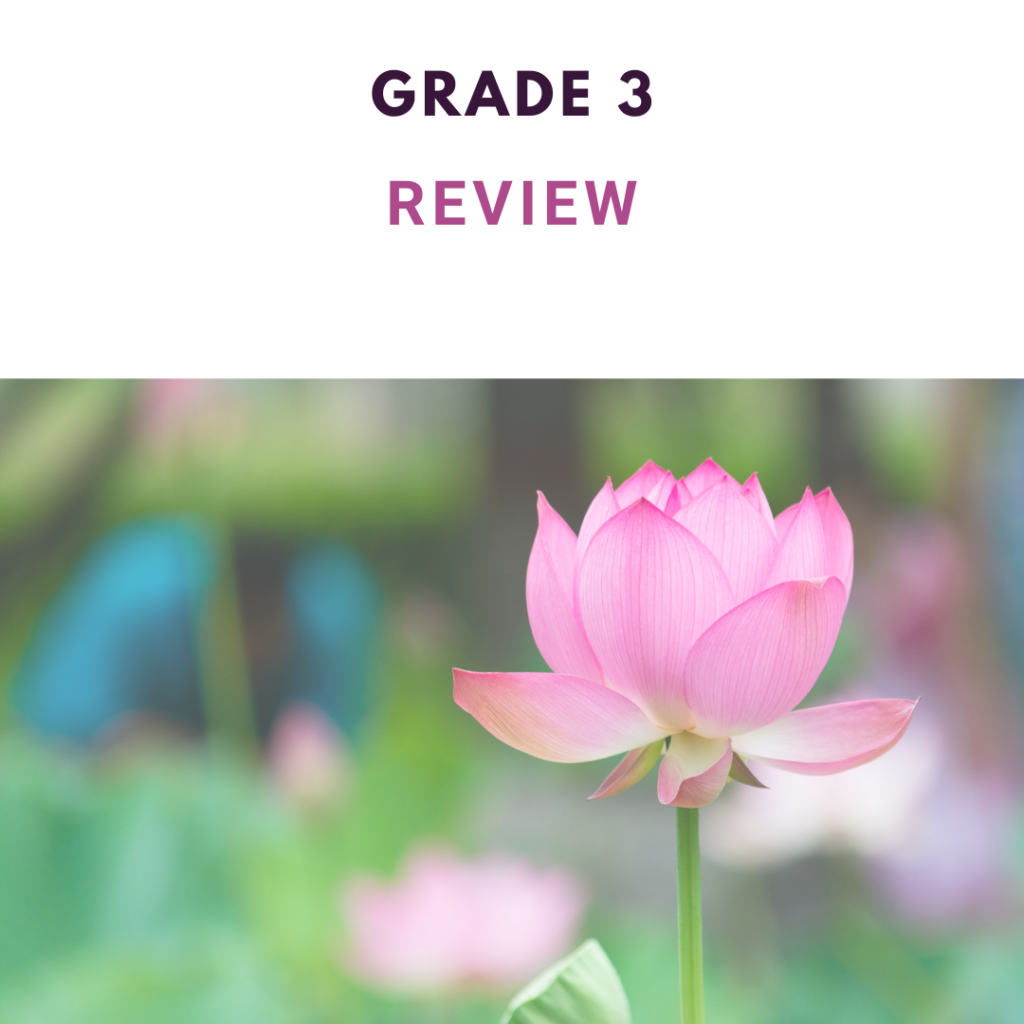
The Tongue of My power hath, from the heaven of My omnipotent glory, addressed to My creation these words: ‘Observe My commandments, for the love of My beauty.
The Kitáb-i-Aqdas
Download the memorization aid
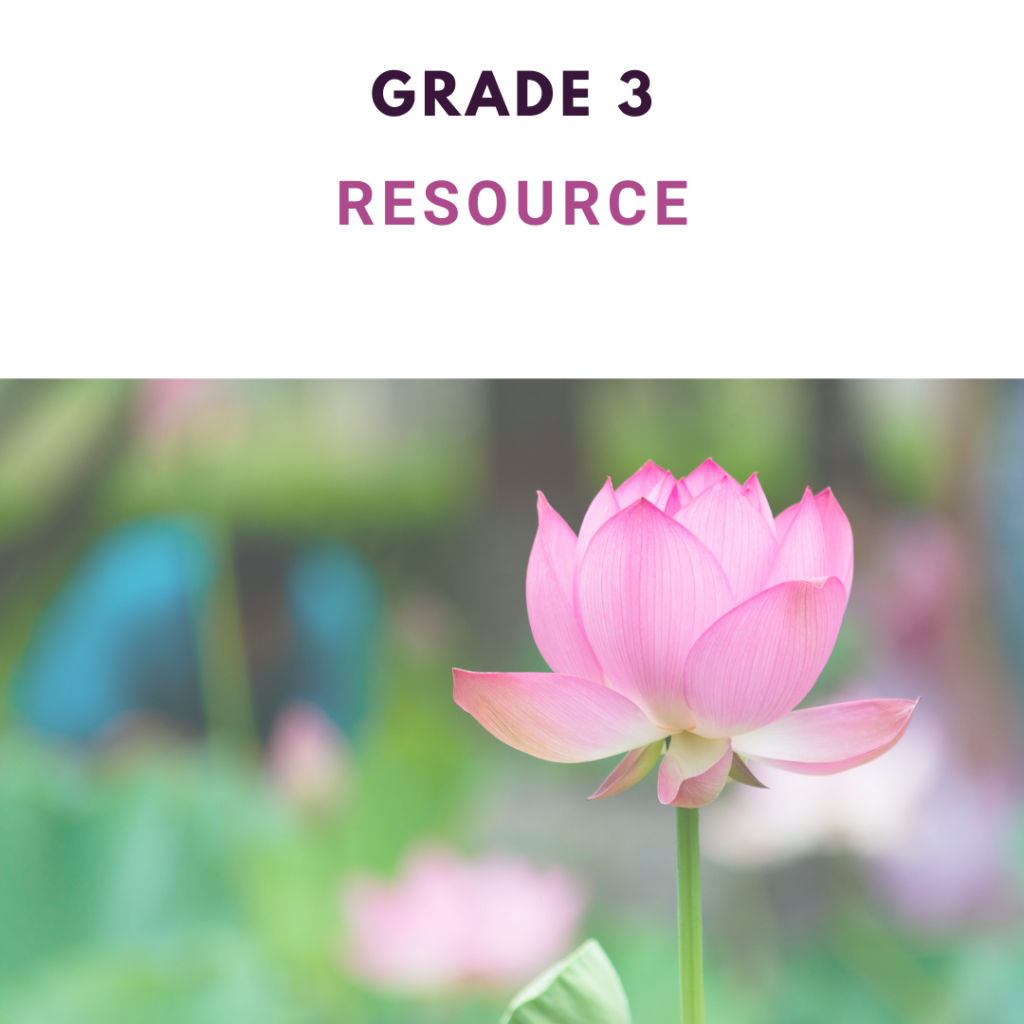
- Slides
- From Brilliant Star Magazine:

